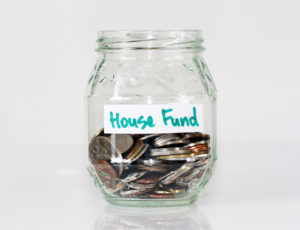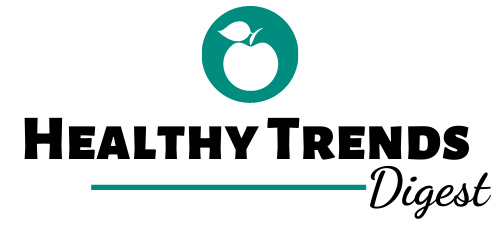Sometimes you need an unbiased person to say, “Hey, here’s where your money is going.”
Think about it like this.
Most of your bills are on auto-pay, so you don’t even see everything coming and going.
You look up one day, and what do you know, most of your money’s gone.
Le sigh.
This is one of the main reasons you should think about establishing a budget. It helps organize and control spending habits, creates a cushion for unforeseen expenses, prepares you for retirement, and much more.
If you’ve tried to stick to a budget and failed miserably, don’t worry, you’re not alone.
In fact, a recent study found that 62% of Americans have less than $1000 in savings.
We’re going to dig into the concept of money for the next few minutes. This way, you know where your money is going, but more importantly, hold onto it.
What You’re Spending the Most Money On
If you want to understand what you’re spending the most money on, it’s time to pull out your laptop, along with a pen and paper.
You want to look over your accounts and note the areas where you tend to “splurge.” Some banking apps automatically sort expenses for you, but if not, it’s simple enough to do yourself.
When you look at your expenses and tally it up; you’ll see areas that could use improvement. Some people refer to these areas as spending leaks.
With “leaks” it doesn’t seem like you’re spending much in the given moment, but when you look back, you’ll see all of those small purchases add up.
Below, we’ve listed some of the most common spending leaks.
Subscriptions
How many times have you noticed a charge for a subscription that you don’t use? You tell yourself you need to cancel, but you forget, and the cycle continues.
If this sounds familiar, don’t feel bad, this happens to the best of us.
Yahoo Finance reports the average American wastes $348 on subscriptions they never use. It’s all too easy to get carried away with the number of subscriptions you have, especially when you feel you need them all.
Thankfully, there are apps out there to help you manage your subscriptions.
Food
 Many people waste money on food—grocery shopping, tossing old, unused food, and eating out every day.
Many people waste money on food—grocery shopping, tossing old, unused food, and eating out every day.
Eating out puts a dent in the wallet fast. You can easily spend $200-300 a week if you’re eating out regularly—sometimes more than that.
On a more melancholy note, our nation throws tosses over $165 billion worth of food in the trash every year. You can avoid this by being more attentive to your food choices. Shop for what you need, keeping in mind that produce goes back faster than non-perishable items.
Moreover, instead of tossing food in the trash, find someone in need to give it to.
Coffee
 If you’re a coffee connoisseur, you already know how easy it is to rack up some serious coffee charges, especially if you’re always on the go, hitting up the Starbucks drive-thru on the regular.
If you’re a coffee connoisseur, you already know how easy it is to rack up some serious coffee charges, especially if you’re always on the go, hitting up the Starbucks drive-thru on the regular.
Take a peek at your accounts and tally up your coffee charges. If you decide you’re spending too much on coffee, establish a coffee budget for the week or month.
Keep in mind; you can always make coffee at home and take it to-go.
Retail Therapy
Most of us are guilty of a little retail therapy from time to time. The psychology behind “retail therapy” confirms shopping provides a quick shot of emotional and psychological support.
So, whether you typically head to the nearest mall or fill a cyber cart or two with goodies, it all makes sense.
There’s nothing wrong with treating yourself as long as you’re able to exercise self-restraint when needed.
How to Create a Budget
We know creating a budget isn’t the most exciting task, but focusing your attention on a budget has its benefits. It allows you to track your spending habits and manage your spending habits more efficiently.
Let’s break it down into seven easy steps:
- Gather all important financial paperwork—bank statements, bills, tax documents.
- Calculate your monthly income.
- Calculate your monthly expenses—housing costs, car note, insurance, childcare, etc.
- Separate fixed monthly expenses and variable expenses (stuff like gas, groceries, entertainment).
- If your income is higher than your expenses, consider the 50-30-20 budget—50% to needs, 30% to wants, and 20% to financial goals. It’s hard for some people to differentiate between wants and needs. If this seems like something you struggle with, you could always try the 80/20 budget. It’s straightforward—80% goes to your expenses, and 20% goes into your savings.
- If your monthly expenses are higher than your income, see where you can cut some things and lower your expenses—eating out less, cutting down subscriptions, etc.
- Keep an eye on your budget to make sure you’re on track.
Frugality at its Finest
 Everyone loves a good deal, whether you stumble upon a good sale or fine-tune your promo code searching skills.
Everyone loves a good deal, whether you stumble upon a good sale or fine-tune your promo code searching skills.
Here are some tips you can use to find good deals and keep your budget under control.
Keeping Cash
These days, it’s pretty rare to have cash on hand. Instead, we have debit cards, credit cards, Google pay, Apple Pay, and so on.
The problem with digital payment options is that it’s harder to keep track of, opposed to keeping cash with you.
Try this one day: withdraw a certain amount of money from your bank account (what you intend on spending) and only use the cash for your daily purchases.
Once it’s gone, that’s it.
Searching for Promo Codes
When you’re shopping online, look for promo codes. You can search “promo codes for March 2021” with the company name, and you’ll see plenty of sites loaded with promo codes to try.
You may have to try a few different ones, which can be annoying and time-consuming, but it’s worth a shot to save some money.
You can also check into browser extensions like Honey that automatically locate promo codes for the websites you visit.
Make a Shopping List
Lists are handy in almost any situation, but especially when you’re headed to the store and need to stay on budget.
After reading this blog, do you think you could make a list and stick to it? It’s not too hard, and it may become your new go-to thing when you visit certain stores.
You’ll see sticking to your budget becomes much easier when you do this, and you know how much to expect to spend—meaning no surprises at the cash register.
Parting Thoughts
You don’t have to be a financial expert to create a budget that works for you. It’s like anything else in life. The more you work at it and familiarize yourself, the better you become.
Creating a budget allows you to plan for the future, affording yourself a certain security level with savings, but it also helps you stay on top of monthly expenses.
The benefits outweigh the hassle of budgeting when you know where your money is going.
This only leaves one question…
Where is your money going?

